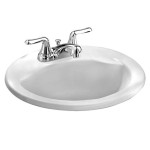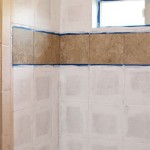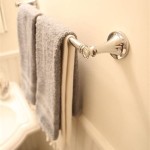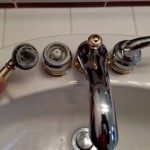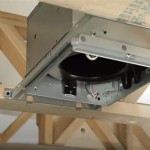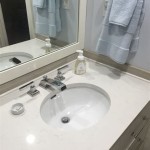Can You Vent A Bathroom Fan Into The Sewers? Exploring the Dangers and Regulations
The question of whether a bathroom fan can be vented into the sewer system is one that arises in construction and renovation projects. It seems logical to some, particularly in situations where ductwork routing presents challenges. However, the practice is almost universally considered to be detrimental and, in many locations, illegal. A comprehensive understanding of building codes, health concerns, and potential system damage is essential before considering such a practice.
Proper ventilation is crucial in a bathroom environment. Bathrooms generate significant amounts of moisture due to showers, baths, and sinks. This moisture, if not properly removed, creates a breeding ground for mold and mildew, damaging the building structure and posing health risks to occupants. Bathroom fans are designed to expel this humid air, preventing these problems.
The intended purpose of a bathroom fan is to vent moisture-laden air to the exterior environment. This allows fresh air to circulate and maintains a healthy indoor air quality. Venting into the sewer system completely subverts this intention and introduces a range of problems that can have serious consequences.
The Key Issue: Introduction of Moisture and Odor into the Sewer System
The primary problem associated with venting a bathroom fan into the sewer system is the introduction of excess moisture and potentially volatile organic compounds (VOCs) into the sanitary sewer system. While sewer systems are designed to handle wastewater, they are not designed to handle continuous streams of humid air. This additional moisture can overload the system's capacity, particularly during periods of heavy rainfall or high sewage volume.
Beyond overloading, the introduction of moisture can exacerbate existing problems within the sewer system. It can contribute to corrosion within pipes, particularly in older systems constructed of materials susceptible to degradation from moisture. It can also promote the growth of biofilms and other microbial communities within the sewer lines, potentially leading to blockages and reduced flow capacity.
Furthermore, the humid air expelled from bathrooms often contains odors, including those from cleaning products, personal care items, and even bodily fluids. These odors, when vented into the sewer system, can permeate throughout the connected plumbing network and potentially escape through sewer vents located on roofs or even through improperly sealed plumbing fixtures within other buildings connected to the same sewer line. This can create unpleasant living conditions and negatively impact air quality in surrounding areas.
The introduction of VOCs is another significant concern. Many common bathroom products, such as hairsprays, perfumes, and cleaning solutions, contain volatile organic compounds. These compounds can be harmful to human health and can contribute to air pollution. Venting these VOCs into the sewer system can expose sewer workers to hazardous substances and potentially lead to environmental contamination if the VOCs are not properly treated at the wastewater treatment plant.
Potential for Backflow and Contamination of Indoor Air
A related and critical concern is the potential for backflow of sewer gases and contaminants into the bathroom. Sewer systems are designed with traps (usually P-traps) in plumbing fixtures to prevent sewer gases from entering buildings. However, these traps can become compromised if the pressure within the sewer system fluctuates significantly. Venting a bathroom fan directly into the sewer line can create pressure differentials that siphon water out of the traps, effectively removing the barrier against sewer gas infiltration.
Sewer gases contain a variety of potentially harmful substances, including methane, hydrogen sulfide, ammonia, and carbon dioxide. Exposure to these gases can cause a range of health problems, including headaches, nausea, dizziness, and in severe cases, even loss of consciousness or death. Hydrogen sulfide, in particular, is a highly toxic gas that can be fatal at high concentrations.
Beyond sewer gases, the potential for backflow can also introduce harmful microorganisms into the bathroom environment. Sewer systems contain a vast array of bacteria, viruses, and parasites that can cause infections and diseases. If backflow occurs, these microorganisms can contaminate surfaces within the bathroom and potentially expose occupants to health risks.
The effectiveness of the bathroom fan itself can also be compromised. If the fan is directly connected to the sewer line, the pressure within the sewer system can create backpressure that reduces the fan's ability to effectively exhaust air from the bathroom. This can negate the fan's primary purpose of removing moisture and preventing mold growth.
Building Codes and Regulatory Restrictions
Building codes and plumbing regulations almost universally prohibit the practice of venting bathroom fans into sewer systems. These regulations are in place to protect public health, prevent damage to infrastructure, and ensure proper functioning of plumbing systems. The specific codes and regulations may vary depending on the jurisdiction, but the underlying principle remains the same: exhaust air must be vented to the exterior environment in a manner that prevents contamination and protects air quality.
The International Residential Code (IRC), a widely adopted model building code, provides clear guidelines on ventilation requirements. It mandates that exhaust air from bathrooms be discharged to the outdoors and prohibits the connection of exhaust ducts to sewer lines or other plumbing vents. Similar provisions are found in other model codes and in locally adopted building codes across various jurisdictions.
Local plumbing codes often specify the acceptable methods for venting bathroom fans, including the type of ductwork that can be used, the location of the exhaust outlet, and the required distance from windows, doors, and other air intakes. These codes are designed to ensure that exhaust air is effectively dispersed and does not create a nuisance or health hazard for nearby occupants.
Violations of building codes and plumbing regulations can result in significant penalties, including fines, mandatory corrections, and even legal action. Homeowners or contractors who attempt to vent bathroom fans into sewer systems may face substantial costs to rectify the situation and ensure compliance with applicable codes. Furthermore, such violations can affect property values and create difficulties when selling a home.
In addition to building codes, environmental regulations may also prohibit the discharge of certain substances into the sewer system. For example, regulations may restrict the release of VOCs or other pollutants that can harm the environment or interfere with the wastewater treatment process. Venting bathroom fans into the sewer system could potentially violate these regulations, depending on the contents of the exhaust air.
Before undertaking any construction or renovation project that involves plumbing or ventilation, it is essential to consult with local building officials and licensed contractors to ensure compliance with all applicable codes and regulations. Obtaining the necessary permits and inspections can help avoid costly mistakes and ensure that the work is performed safely and correctly.
The consequences of improper ventilation extend beyond immediate health and safety concerns. Long-term exposure to excessive moisture can lead to structural damage to the building, including rotting wood, corroded metal, and deteriorated drywall. This can result in costly repairs and reduced property value. Proper ventilation, on the other hand, helps to maintain the integrity of the building and prolong its lifespan.
Ultimately, the purpose of building codes and regulations is to protect the health and safety of building occupants and to ensure the proper functioning of building systems. Venting a bathroom fan into the sewer system violates these principles and can have serious consequences. Adhering to established standards and best practices is crucial for creating a safe, healthy, and sustainable built environment.
Does Every Toilet Need A Vent Pipe Quora

Can You Vent A Bathroom Exhaust Fan Into The Attic Diy Round Table

Can Bathroom Exhaust Fans Discharge Into Attics Waypoint Inspection

Venting A Sewage Basin Doityourself Com Community Forums

Plumbing Vents The Ultimate Guide Hammerpedia

Why Is There A Sewer Smell When My Bathroom Fan On Mind Your Behind
Can Plumbing Vents Cause Sewer Gas To Get Inside Your House Quora

Plumbing Vents Common Problems And Solutions Family Handyman
Kitchen Bath Venting With Air Admittance Valves Jlc

Bathroom Ventilation 9 Easy Ways To Improve Bob Vila
Related Posts
